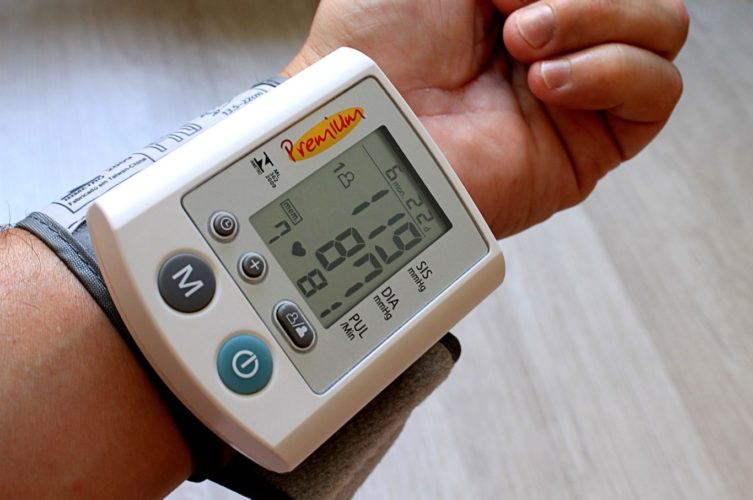Source: beingpatient.com
Dementia researchers have looked into a variety of possible causes for the disease, from genetics to traumatic brain injuries. But one group, led by genetic epidemiologist Dr. Shaoyong Su, is looking into a surprising research area: high blood pressure in childhood.
Prior research has established high cholesterol and blood pressure, as well as obesity and aging, as risk factors for developing dementia. But Su and his colleagues at the Georgia Prevention Institute at the Medical College of Georgia at Augusta University decided to focus on whether higher or rapidly increasing blood pressure during childhood can cause vascular damage, leading to restricted blood flow and even brain cell death.
“Dementia is not a normal part of aging, and once it begins you can’t reverse it,” Su said in a news release. “It typically surfaces at about age 65 or older, but we think the problem really starts much earlier.”
The Link Between Dementia and High Blood Pressure
According to the World Health Organization (WHO), around 50 million people worldwide are affected by dementia, and around 10 million new cases arise each year. The increase of risk factors for dementia, particularly in children, makes the need for early diagnosis and risk screening crucial, says Su.
To fill this need, Su and fellow researchers Dr. Catherine Davis, a clinical health psychologist at the Georgia Prevention Institute, and Dr. Nathan Yanasak, a magnetic resonance imaging scientist in the MCG Department of Radiology and Imaging, are conducting a study on lifetime data from 600 people. The study sample represents a roughly equal number of men and women of various races who were entering midlife and on whom the researchers had childhood data.
The participants were at an average of 40 years old at the time of the study. The researchers collected data on them over the course of 23 years, including ambulatory blood pressure, arterial stiffness, and other measures of chronic stress and lifestyle. Reflecting the general population, about one third of the study group now have high blood pressure.
Su and his team are conducting brain imaging to examine other relevant risk factors, like cerebral blood flow and cognitive testing. A few of their subjects have shown symptoms of arterial stiffness and atherosclerosis—an arterial disease characterized by fatty deposits forming on arterial walls—and Su hopes to answer whether these factors are associated with unhealthy structural and functional changes in the brain.
“First we have to know exactly what is happening,” Yanasak explained in the news release. “Once we know what is happening, we can start searching for solutions.”
“We will be able to look at associations between their cardiovascular measures over time and the current status of their cognitive ability, their cerebral blood flow and brain structure,” Davis added.
Some of their research has already shown that an elevated blood pressure—whether from childhood trauma, obesity or lifestyle factors like diet and inactivity—can affect blood flow and alter some of the delicate architecture of the brain.
According to Su, it’s not instantaneous damage, but rather progressive problems that are the real danger. Other studies have already shown a connection between hypertension in middle age (or even as early as your 30s) and cognitive decline in old age.
The researchers are using a variety of tests to get their results, including arterial spin labeling and diffusion tensor imaging. Arterial spin labeling, which is regularly used to rapidly assess brain blood flow in stroke patients, measures the amount of blood flowing in the brains of study participants. By manipulating the magnetic properties of blood, the scanner enables the measures of blood flow through minuscule capillaries feeding brain tissue.
Diffusion tensor imaging, comparatively, allows a glimpse at the brain’s nerve fibers, or axons, which enable communication from neurons to muscle cells, organs, and other neurons. This advanced form of scanning uses the natural flow of water to examine the integrity of these neural fibers. According to Yanasak, subtle changes in this tissue, not normally detectable by a standard MRI, are an early warning sign that the vasculature of the brain is being impacted by high blood pressure.
As part of the study, participants are also questioned on lifestyle habits, such as physical activity levels and the use of alcohol and tobacco products. Su and his team are looking into whether unhealthy environmental factors correlate with high blood pressure and worsen any impact on the brain and cognition.
“We can see whether their lifestyle can influence or modify the relationship between blood pressure and brain cognitive function,” Su said.
Childhood Trauma, Blood Pressure and the Brain
According to Su, those who experienced multiple traumatic events in childhood, from emotional and sexual abuse to neglect, had higher blood pressures as young adults than their peers. The difference of 10 points in the systolic pressure—the top number denoting pressure while the heart is contracting—by early adulthood puts these young people at higher risk for hypertension and coronary artery disease by middle or old age.
The stress levels of participants are also being assessed through questions about stress in life, family or work problems, as well as socioeconomic status and adverse childhood events. According to Su, traumatic childhood experiences, like sexual assault or abandonment, can result in actual structural changes to a child’s developing brain and put them at increased risk for unhealthy habits like smoking and other substance abuse.
Hoping to expand their research, Su and his team also aim to investigate whether ethnicity and sex are factors in providing protection against or increasing the effects of unhealthy associations. Some associations, such as black men tending to have higher blood pressure earlier in life and a significantly higher nighttime blood pressure, have already been established by past research.
According to Su, it’s important to determine which factors present early in life can influence risk for developing dementia, and to determine from them the best strategies and times for preventative intervention.
